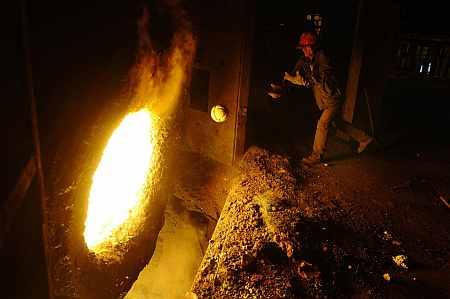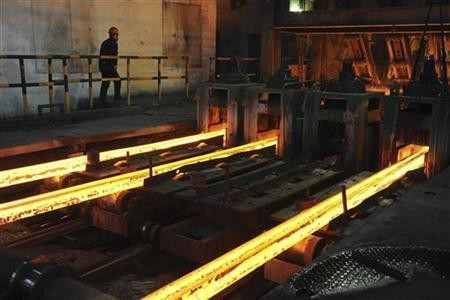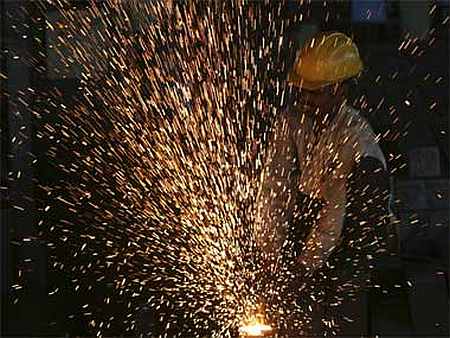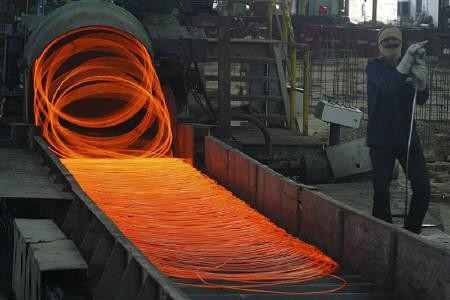 | « Back to article | Print this article |
Iron ore: Much ado about little things
In a globalised world, there could be room for concern if some of our steel makers close to the coast are found to be importing iron ore or pellets. This, however, was the initial reaction when a vessel carrying Brazilian ore recently called at Paradip port in Odisha.
Some started wondering in an extreme way if this was to be taken as the initial signal for India on way to becoming a net importer of iron ore. Earlier, however, some steel mills in the country's west and south, denied supplies from mines in Karnataka and Goa for reasons well known, were obliged to make some imports.
To look at it rationally, a steel plant in Visakhapatnam without ownership of mines perhaps will not be worse off if it starts using Australian ore instead of hauling the mineral from Bailadila in Chattisgarh, especially when sea freight is down and rail charges are up.
Click NEXT to read more...
Iron ore: Much ado about little things
And, then why should there be rejoicing at all over some major addition to the country's iron ore deposits as the cut-off point in iron (Fe) content is to be lowered by a government fiat from 55 per cent to 45 per cent.
How much bigger our resource base will be because of the lowering of the Fe enrichment level of the ore will be known once the Geological Survey of India has done the assessment.
The mines ministry says at the present Fe cut-off point of 55 per cent, the country has iron ore reserves of 28.5 billion tonnes (bt) to "go up further with ongoing exploration."
Click NEXT to read more...
Iron ore: Much ado about little things
The lowering of the Fe cut-off point, which has not come a day too soon, will in one stroke boost reserves by more than 5 bt.
Rich resource endowments and a limited steel production base till a Few years ago saw metal producers, irrespective of whether they had ownership of mines or not, exercising the soft option of using only high quality lump ore. They did not spare a thought for disposal of mounting stocks of fines at pitheads.
In fact, a situation was created when exports of ore, mainly fines, came to the rescue of miners. It is only when the government gave the steel industry a target to lift production to 200 million tonnes (mt) by 2020 and the realisation that non-renewable ore resource will get exhausted sooner than later if reliance is put on lump ore use alone that a campaign for conservation started gathering steam.
Click NEXT to read more...
Iron ore: Much ado about little things
Secretary general of the Federation of Indian Mineral Industries (FIMI) R K Sharma on a mission to convince the government that fines exports in the prevailing circumstances will not militate against the interest of the local steel industry is obviously delighted that "mining of lower grades of ore" is to enhance the supply of the mineral.
In its urgings for a more liberal approach to iron ore exports, FIMI has the support of the mines ministry. Reserves to become bigger may find FIMI launching a spirited campaign for the government to take a liberal stand on exports.
But, the steel ministry's stand that exports be capped at a low level through high tariff barrier is finding favour with the government.
Click NEXT to read more...
Iron ore: Much ado about little things
Sharma does not find anything unique in India settling for a lower Fe cut-off level in our ore. He says: "Some other countries, particularly China with an insatiable appetite for ore, have migrated to mining of iron ore with very low Fe content and with success."
China, which produced over 683 mt of steel last year, against India's 72 mt, is known to be using huge quantities of domestically mined ore, where the Fe content could be lower than 25 per cent.
All the low grade ore before it becomes usable is reduced to particles for mineral to be separated from waste. The mineral part then is beneficiated and blended with better grades of imported ore to make sinter or pellets for use in blast furnaces.
Click NEXT to read more...
Iron ore: Much ado about little things
China is going long distance to raise domestic ore production irrespective of quality in order to progressively reduce its dependence on imports.
It may produce up to 1.55 bt of ore in 2012, but in terms of the quality of imported ore, this will get reduced to 591 mt.
Last year, China alone imported 686 mt of ore out of the world seaborne trade in the mineral of over 1 bt. At this point, ore stocks at Chinese ports are about 100 mt.
Click NEXT to read more...
Iron ore: Much ado about little things
No wonder, the combination of anaemic condition of the steel industry in the West, particularly in Europe and slowdown in Chinese buying has seen the benchmark iron ore with 62 per cent Fe content down to $128 a tonne, the lowest since November 2011. The buzz in the market is ore could find the floor at $120 a tonne.
Should China be the model for India? Steel Authority of India Ltd (SAIL) Chairman Chandra Sekhar Verma says: "While we need not be shoehorned into doing whatever China does, there is no running away from our getting used to make do with ore fines and at later stages with lower grades of ore. I want SAIL to be in the industry's forefront into making steel using ore fines and non-coking coal."







